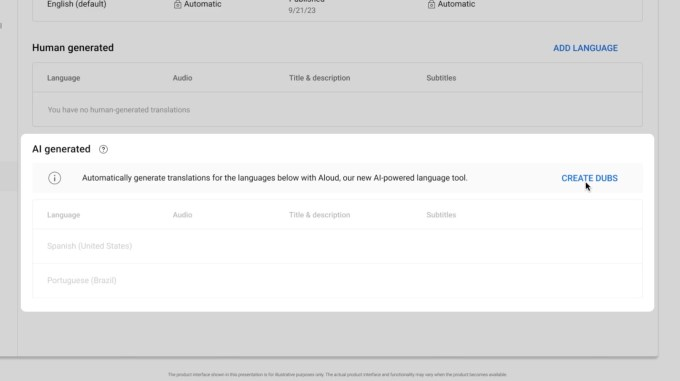YouTube is expanding its Creator Music feature with new AI features, including an AI-dubbing tool, to help creators find and use music in their videos more easily.
Starting early next year, YouTube will launch a new feature that will work like a music concierge. Creators can simply type in a description of the video they are working on, such as the length or type of song they are looking for, and the Creator Music tool will suggest the right track at the right price.

This is a significant improvement over the current system, which requires creators to search for songs by title, artist, or genre. The new AI-powered feature will save creators time and help them find the perfect music for their videos more easily.
In addition, YouTube is also introducing an AI-dubbing tool called Aloud, which will be integrated into YouTube Studio. Aloud allows creators to generate a dub of their video in another language with just one click. This can be a huge time-saver for creators who want to reach a global audience.

Aloud is currently testing with select creators and will be open to more creators next year. YouTube previously announced its plans to integrate Aloud with YouTube at VidCon earlier this year.
The new AI features in Creator Music are part of YouTube’s broader effort to make it easier for creators to produce high-quality content. YouTube is also launching a new creator app and a generative AI feature for Shorts.

The new AI features in Creator Music are a welcome addition for creators. They will make it easier for creators to find and use music in their videos, which can help them to produce more engaging and popular content.

